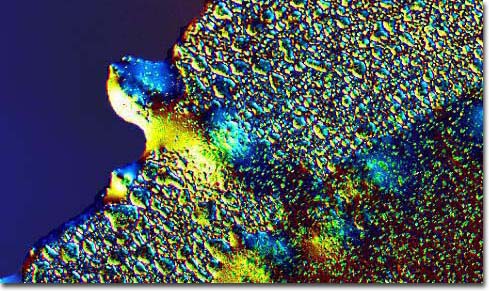|
In 1991, Science magazine dubbed the Buckyball "molecule of the year," professing it "the discovery most likely to shape the course of scientific research in the years ahead." Part of the reason for this award and the pervasive scientific interest in Buckyballs since their discovery is their astonishing versatility. The molecules, which along with diamonds and graphite are one of the only known forms of pure carbon, may be readily modified into other molecular structures using relatively simple techniques. Thus, Buckyballs may be used as building blocks for new materials. For instance, solids of pure Buckyballs are crystalline structures that may act as insulators or semiconductors, but when doped with an alkali metal, the substance may take on the characteristics of a metal capable of conducting electricity. Buckyballs doped with other substances may also exhibit ferromagnetic or superconducting properties, making the possibilities for their use seemingly endless.
|
